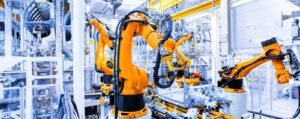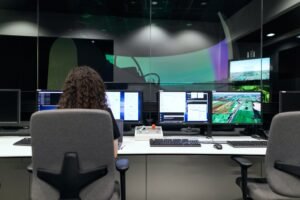Table of Contents
Introduction
When someone asks me, “How much does it cost to develop an electronic product”? My answer is always, “It depends.”
In the last few years, EasyIOT has developed more than 100 different electronic products. Among them, we’ve developed electronic toys for less than USD 20K and industrial machinery for over USD 300K. As you can see, it’s a big range. Statistically, over 80% of our designed products cost between USD 50K and USD 100K.
In this article, we’ll take a closer look at how the price range is calculated. To understand the cost, you must first familiarise yourself with the electronic product development process. I prefer to divide the product development process into two main stages, product design and product industrialisation.
Cost of Product Design
The process of designing an electronic product typically starts with system design. From there, an industrial and mechanical engineer designs the product casing, while a hardware and firmware engineer works together on the circuit board. The resulting prototype combines the product casing and circuit board.
Project Management ($5,000 – $20,000)
Having technical expertise is crucial for managing product development and ensuring the quality of the work being done. If you lack this technical knowledge, it’s critical to have a project manager who can assist you in making important technical decisions and supervise your primary developers.
Even if you are a skilled engineer, having a project manager who comprehensively understands the entire hardware product development process, from ideation to manufacturing, can be incredibly advantageous.
While individual engineers are relatively easy to find, a qualified project manager is extremely rare and expensive.
System Design ($1,000 – $10,000)
System design is the highest level of architecture design. It involves trade-offs between competing design goals, such as cost, performance, and reliability. It applies to various product subsystems, including software, mechanical, and electrical systems.
After initial market research, you should understand your product’s desired appearance, functionality, and cost. Your lead engineer (often from a hardware or firmware background) can help you with system design.
Industrial Design ($0 – $20,000)
Industrial design focuses on designing physical products that are aesthetically pleasing, functional, and user-friendly. The goal of industrial design is to create products that are not only visually appealing but also meet the needs and expectations of the target market.
For example, industrial designers played a crucial role in creating the sleek and elegant appearance of the iPhone.
If aesthetics are not important for your product (e.g. your product is an industrial device that doesn’t require user interaction), then this step can be skipped.
Mechanical Design ($3,000 – $40,000)
While industrial design answers the questions about how the product looks and works, it informs you about the size of all the parts, their positions, and how to manufacture and assemble them.
The mechanical designer takes care of all the above and turns a product concept into manufacturable parts. It involves the use of engineering principles and techniques to create parts and assemblies that are functional, reliable, and cost-effective.
Hardware Design ($3,000 – $50,000)
The circuit board is the central component of any electronic hardware product, and its design is closely linked with industrial and mechanical design.
Creating a circuit board requires both hardware and firmware development. Hardware development is where the engineer decides what hardware components to use, how to connect them, and where to place them on the circuit board.
A hardware engineer (electronic engineer) is typically required to complete this task.
Firmware Design ($3,000 – $50,000)
Nearly all contemporary hardware products feature at least one microcontroller unit (MCU) or microprocessor, which functions like the central processing unit of a computer or the brain of a human being. These components must be programmed by a firmware engineer for the product to operate effectively.
Prototyping ($1,000 – $10,000)
Prototyping involves bringing all the previous work together to create a tangible product you can hold. When you have completed the design of your circuit board and product enclosure, you are ready to move forward to prototyping.
In addition to the circuit board and enclosure, your prototype may require additional components such as a battery, screen, button, or step motor, which can be purchased from retailers like your local hardware store.
The mechanical engineer is typically responsible for assembling all the components to create the prototype.
Optional: Web App Development ($0 – $50,000)
You may also need web app development if you are producing an IoT product (Internet of Things).
Web app development is the process of designing and developing web applications. A web application is a software application that runs on a web server and is accessed through a web browser. It is a multi-disciplinary field that requires combining skills in web development, graphic design, user experience, and web security.
A full-stack software engineer or a pair of front-end and back-end engineers are required to complete this task.
Optional: Mobile App Development ($0 – $50,000)
You may also need mobile app development if your product requires a mobile application (like an IoT product).
Mobile app development is creating software applications that run on mobile devices, such as smartphones and tablets. It involves designing, coding, testing, and deploying apps for various mobile operating systems, such as iOS and Android.
An iOS developer and an Android developer are typically required to complete this task.
Cost of Product Industrialisation
Bringing your prototype to mass production requires careful preparation and testing. Custom tools must be created for both manufacturing and testing purposes. Other important tasks, such as product package design and certification, must also be completed.
Validation Test ($2,000 – $20,000)
To ensure that the final product meets the desired quality standards, three rounds of testing must be conducted: Engineering Validation Test (EVT), Design Validation Test (DVT), and Production Validation Test (PVT).
These tests are conducted to optimize your prototype and bring it closer to your final product.
Generally, you can sell the prototypes that can pass PVT, as they should be identical to your final product.
EVT is typically done in-house, whereas a contract manufacturer often does DVT and PVT.
Injection Moulding ($2,000 – $40,000)
After the Engineering Validation Prototype (EVP) stage, your prototype will closely resemble the final product in many aspects, except for the product enclosure. Although 3D printing the enclosure is convenient during product development, it’s not the best choice for large-scale production due to its high cost and time consumption.
The most widely used technology for large-scale plastic production is injection moulding. To acquire an injection mould, you will need to work with a mould maker.
Certification & Approval ($0 – $30,000)
You may need one or more certifications to sell your product legally in your target market.
To determine the exact certificates and approvals required, it’s best to consult a certified testing laboratory. The certificates you need will depend on your target market, the nature of your product, and the amount you want to invest in certification.
Some common certifications include FCC, UL, CE, RoHS, RCM, CCC, etc.
Product Package Design ($0 – $10,000)
Product packaging is often neglected but plays a crucial role in product differentiation and consumer appeal. A well-designed package can set your product apart from competitors and attract buyers, even if they are unfamiliar with your brand.
There are several options available to design an attractive product package:
- Hire a specialised packaging designer through freelance websites.
- Work with a packaging box manufacturer who offers design services.
- Consult with your industrial design engineer, who could help you with this.
Conclusion
If you add up all the above numbers, you will get the range of $20,000 – $300,000. This is the entire fixed cost for product development.
As you can see, this is a huge range, so if you’re interested in getting a more accurate estimation of your product development cost, look at this post, “Key Factors Shaping the Costs of Developing Electronic Products“.






